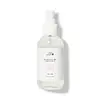La Roche-Posay Anthelios Anti-Shine Invisible Fresh Mist Spray SPF 50 Versus 100% Pure Rose Water Face Mist
What's inside
What's inside
 Key Ingredients
Key Ingredients

 Benefits
Benefits

 Concerns
Concerns

 Ingredients Side-by-side
Ingredients Side-by-side

Butane
Water
Skin ConditioningHomosalate
Skin ConditioningOctocrylene
UV AbsorberGlycerin
HumectantDimethicone
EmollientEthylhexyl Salicylate
UV AbsorberDicaprylyl Carbonate
EmollientNylon-12
Diisopropyl Sebacate
EmollientButyl Methoxydibenzoylmethane
UV AbsorberStyrene/Acrylates Copolymer
P-Anisic Acid
MaskingCaprylyl Glycol
EmollientCarnosine
Skin ConditioningCyclohexasiloxane
EmollientDisodium EDTA
Drometrizole Trisiloxane
UV AbsorberEthylhexyl Triazone
UV AbsorberMethyl Methacrylate Crosspolymer
PEG-32
HumectantPEG-8 Laurate
EmulsifyingPhenoxyethanol
PreservativePoly C10-30 Alkyl Acrylate
Emulsion StabilisingPolyglyceryl-6 Polyricinoleate
EmulsifyingSodium Chloride
MaskingSodium Hyaluronate
HumectantTocopherol
AntioxidantParfum
MaskingButane, Water, Homosalate, Octocrylene, Glycerin, Dimethicone, Ethylhexyl Salicylate, Dicaprylyl Carbonate, Nylon-12, Diisopropyl Sebacate, Butyl Methoxydibenzoylmethane, Styrene/Acrylates Copolymer, P-Anisic Acid, Caprylyl Glycol, Carnosine, Cyclohexasiloxane, Disodium EDTA, Drometrizole Trisiloxane, Ethylhexyl Triazone, Methyl Methacrylate Crosspolymer, PEG-32, PEG-8 Laurate, Phenoxyethanol, Poly C10-30 Alkyl Acrylate, Polyglyceryl-6 Polyricinoleate, Sodium Chloride, Sodium Hyaluronate, Tocopherol, Parfum
Aloe Barbadensis Leaf Juice
Skin ConditioningRosa Damascena Flower Water
MaskingCalendula Officinalis Flower Extract
MaskingCamellia Sinensis Leaf Extract
AntimicrobialChamomilla Recutita Flower Extract
MaskingAloe Barbadensis Leaf Juice, Rosa Damascena Flower Water, Calendula Officinalis Flower Extract, Camellia Sinensis Leaf Extract, Chamomilla Recutita Flower Extract, Sodium Hyaluronate, Rosa Damascena Flower Oil, Xanthan Gum, Potassium Sorbate, Dehydroacetic Acid, Glycerin, Water, Citronellol, Eugenol, Geraniol
 Reviews
Reviews

Ingredients Explained
These ingredients are found in both products.
Ingredients higher up in an ingredient list are typically present in a larger amount.
Glycerin is already naturally found in your skin. It helps moisturize and protect your skin.
A study from 2016 found glycerin to be more effective as a humectant than AHAs and hyaluronic acid.
As a humectant, it helps the skin stay hydrated by pulling moisture to your skin. The low molecular weight of glycerin allows it to pull moisture into the deeper layers of your skin.
Hydrated skin improves your skin barrier; Your skin barrier helps protect against irritants and bacteria.
Glycerin has also been found to have antimicrobial and antiviral properties. Due to these properties, glycerin is often used in wound and burn treatments.
In cosmetics, glycerin is usually derived from plants such as soybean or palm. However, it can also be sourced from animals, such as tallow or animal fat.
This ingredient is organic, colorless, odorless, and non-toxic.
Glycerin is the name for this ingredient in American English. British English uses Glycerol/Glycerine.
Learn more about GlycerinSodium Hyaluronate is hyaluronic acid's salt form. It is commonly derived from the sodium salt of hyaluronic acid.
Like hyaluronic acid, it is great at holding water and acts as a humectant. This makes it a great skin hydrating ingredient.
Sodium Hyaluronate is naturally occurring in our bodies and is mostly found in eye fluid and joints.
These are some other common types of Hyaluronic Acid:
Learn more about Sodium HyaluronateWater. It's the most common cosmetic ingredient of all. You'll usually see it at the top of ingredient lists, meaning that it makes up the largest part of the product.
So why is it so popular? Water most often acts as a solvent - this means that it helps dissolve other ingredients into the formulation.
You'll also recognize water as that liquid we all need to stay alive. If you see this, drink a glass of water. Stay hydrated!
Learn more about Water